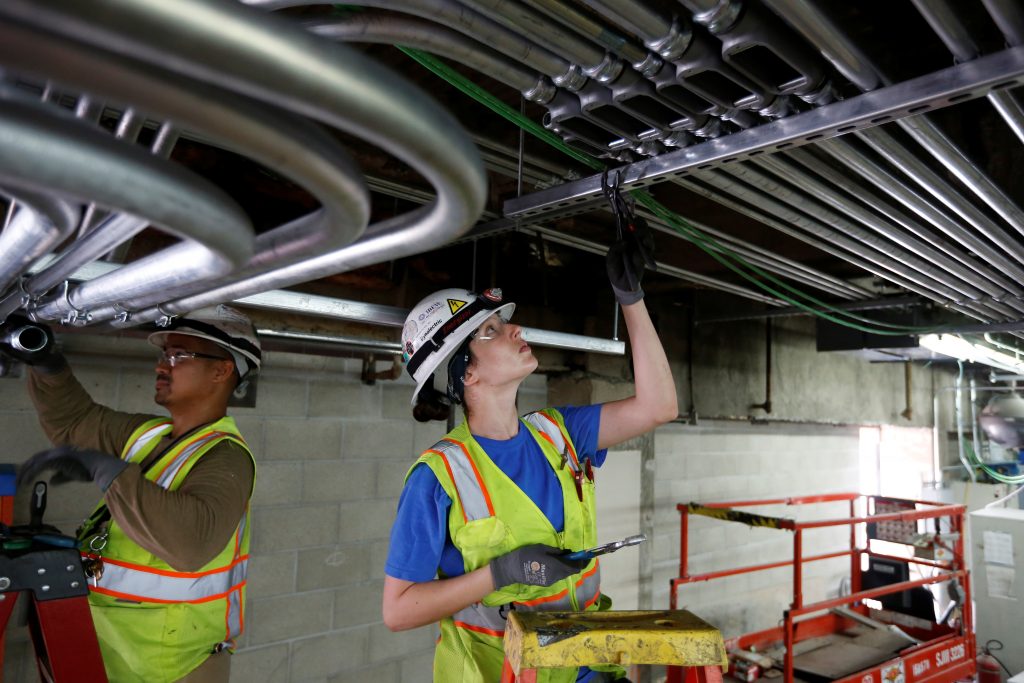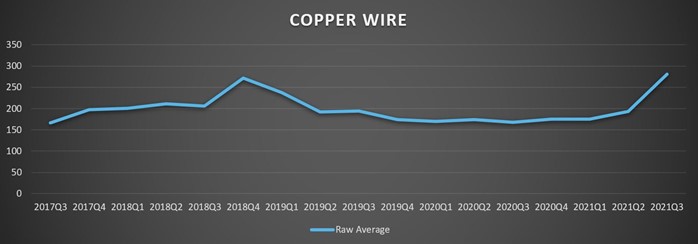
The cost trends and analysis of material pricing, such as copper wire, are constantly a hot topic of discussion in the construction industry and beyond – whether in response to public policy, concerns about infrastructure or the effects of the pandemic and natural disasters.
Copper is a major material used in just about every area of residential and commercial construction, from copper wiring to heavy appliances to roofing. Copper is commonly and frequently used in the construction industry because of its durability, malleability and resistance to corrosion. The aesthetic and design benefits copper has on the architecture of commercial buildings and transportation is also noteworthy. The price of copper is even seen as a leading economic indicator — a rising market price suggests economic health and a decreasing price indicates an economic downturn. COVID-19 caused a global economic disruption, so the increase in the price of copper is a positive indication of economic recovery.
Tracking the Cost of Copper Wire
After a spike in copper costs heading into 2019, data shows copper wire costs became steady for almost two years, with little to no fluctuation.

Copper wire prices began to rise again significantly towards the end of 2020, increasing more than 14% as we rang in 2021. But that was merely the beginning of the meteoric rise to follow. Over the last quarter, copper wire costs have soared to $280.65 per MLF for 600-volt stranded type THWN-THHN #10. Overall, a nearly 67% increase since the third quarter of 2020 — copper wire’s highest price in recent years.
Contributing Factors for the Rise in Copper Wire Costs
In the analysis of market conditions and impacts on construction costs, experts found that the cost of aluminum, steel and copper-based products were increasing pre-COVID-19 due to tariff pressures. Those costs continued to increase during the pandemic.
The prices of raw materials are a driver of prices for construction materials; however, they are not the only driver to the final material cost as there are many components that go into the manufacturing of the final construction material, particularly in metals.
Data engineers identified four contributing factors for price fluctuations in core metals such as copper: fabrication and manufacturing costs, installation labor, transportation costs and tariffs, and supply and demand.
Let’s expand on the factor of supply and demand. The impacts of the pandemic hit industrial manufacturers and factories hard, especially those that depend on workers whose jobs cannot be carried out remotely. The effect of public health requirements and COVID-19 outbreaks was a halt or delay in production and thousands of jobs lost. Through the worst of the pandemic, the United States saw thousands of production jobs disappear. The high-demand nature of pandemic recovery has emptied stressed supply chains and inflated prices at a rate we have not seen in recent years.
Five industries are driving copper demand. These industries and applications include construction, electronics, automotive and transportation, industrial machinery and equipment, and medical surfaces. Building construction is the single largest market for copper use.
Copper’s Critical Role Against Global Warming and Climate Change
There is another demand for copper that will only grow in the coming decades: copper’s critical role in sustaining a low-carbon economy. Copper has the greatest thermal and electrical conductivity of any non-precious metal and is widely used in solar power systems, wind-powered industrial processes, energy storage technologies and electric vehicle production and infrastructure. By using copper in energy applications, energy efficiency and reliability are improved and greenhouse gas emissions are reduced.
All of these things attribute to the increase in copper costs but there are still additional factors. In reality, this is only a small sample of the more than 180 different listening posts that data engineers track to determine market fluctuations.
Other Notable Increases in Electrical Costs
Copper wire is not the only spike that is noted for electrical components. Electric metallic tubing, commonly known as EMT, is a thinly-walled trough for protecting electric wiring. It is made out of coated steel and aluminum, both metals that have seen recent cost increases. EMT conduit is more commonly seen in industrial and commercial buildings, rather than in residential homes since these conduits come in a wide variety of sizes and dimensions.

Supply and demand caused EMT conduit prices to fall at the onset of the COVID-19 pandemic and rise as the American economy has continued to recover. EMT conduit costs has risen nearly 54% since the fourth quarter of 2020 — bringing it to its highest price in recent years.
We have been tracking rising price trends in recent quarters that will have an impact on the cost of construction for the foreseeable future. This volatility in price hikes has stunned the market. We’ll continue to track these changes and more to keep you informed on what the data says.

